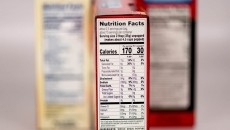New research supports difficulty of setting upper limits for harmful nutrients
The study’s authors, from the Food and Drug Administration’s Office of Nutrition, Labeling and Dietary Supplements, said that tolerable upper intake levels for nutrients are important, partly because they can be used to estimate how many people are at risk of adverse effects from excessive nutrient intake. However, the Institute of Medicine (IOM) has not set tolerable upper intake levels for trans fat, saturated fat and cholesterol because any consumption of these nutrients at all has been associated with an increase in LDL cholesterol (low-density lipoprotein, or so-called ‘bad’ cholesterol).
In addition, the IOM considers that it is not possible to completely avoid trans fat, saturated fat and cholesterol within the framework of a normal diet.
Current guidelines
Nevertheless, the 2010 Dietary Guidelines Advisory Committee concluded that there is strong evidence that saturated fat intake is associated with increased risk of coronary heart disease and recommended that people should get less than ten percent of their energy from saturated fat. They added that further benefits could be achieved by limiting saturated fat consumption to seven percent of energy intake, and replacing saturated fat with mono- and polyunsaturated fats, basing this conclusion on prospective cohort studies.
The Committee also said there are benefits to limiting artificial trans fat as much as possible and upheld the prevailing recommendation that cholesterol intake should be limited to less than 300mg a day.
Through their revision of available data, the authors of this latest paper found that may be possible to establish a lowest-observed-adverse-effect-level for trans fat and saturated fat by identifying the lowest percentile of intake at which increased risk was found. However, they could not identify such a threshold for cholesterol through their analysis of observational studies, although they claim that there is sufficient evidence to link cholesterol intake with markers of heart disease risk.
“The results of this analysis confirm the limitations of the risk assessment model for setting [upper limits],” they wrote.
Source: Nutrition Reviews
Vol. 69, issue 5, pp 270–278
“Tolerable upper intake levels for trans fat, saturated fat, and cholesterol”
Authors: Paula R Trumbo and Tomoko Shimakawa












